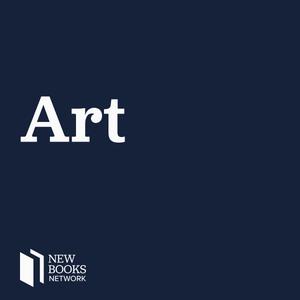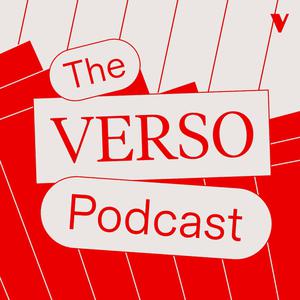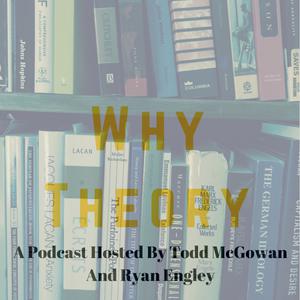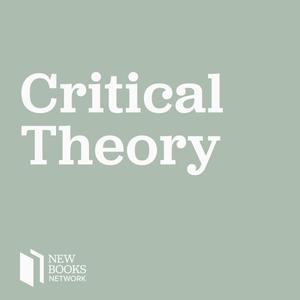
New Books in Art
Interviews with Scholars of Art about their New Books
- 50 minutes 56 secondsElizabeth King and W. David Todd, "Miracles and Machines: A Sixteenth-Century Automaton and Its Legend" (Getty, 2023)
Miracles and Machines: A Sixteenth-Century Automaton and Its Legend (Getty Publications, 2023) tells the singular story of an uncanny, rare object at the cusp of art and science: a 450-year-old automaton known as “the monk.” The walking, gesticulating figure of a friar, in the collection of the Smithsonian Institution’s National Museum of American History, is among the earliest extant ancestors of the self-propelled robot. According to legend connected to the court of Philip II of Spain, the monk represents a portrait of Diego de Alcalá, a humble Franciscan lay brother whose holy corpse was said to be agent to the miraculous cure of Spain’s crown prince as he lay dying in 1562.
In tracking the origins of the monk and its legend, the authors visited archives, libraries, and museums across the United States and Europe, probing the paradox of a mechanical object performing an apparently spiritual act. They identified seven kindred automata from the same period, which, they argue, form a paradigmatic class of walking “prime movers,” unprecedented in their combination of visual and functional realism. While most of the literature on automata focuses on the Enlightenment, this enthralling narrative journeys back to the late Renaissance, when clockwork machinery was entirely new, foretelling the evolution of artificial life to come.
Elizabeth King, a sculptor and writer, is professor emerita of sculpture and extended media at Virginia Commonwealth University School of the Arts in Richmond. W. David Todd is associate curator emeritus and former conservator of timekeeping at the National Museum of American History, Smithsonian Institution, Washington, DC.
Lauren Fonto is a Master's student in the program Heritage and Cultural Sciences: Heritage Conservation at the University of Pretoria, South Africa. She is also a collections management intern in the public sector.
Learn more about your ad choices. Visit megaphone.fm/adchoices
Support our show by becoming a premium member! https://newbooksnetwork.supportingcast.fm/art
19 January 2025, 9:00 am - 56 minutes 49 seconds(Re)Making Radio with the Shortwave Collective
The Shortwave Collective describe themselves as “an international feminist group using the radio spectrum as artistic material.” I was first intrigued by their piece Receive-Transmit-Receive, an exquisite corpse of audio, in which members each contributed their own recordings of sounds from across the radio spectrum. But what really affected me was their ongoing public education project of teaching people to make their own no-power, low-budget radios called open-wave receivers. They’ve held radio-making workshops in Portugal, France, and the UK and they’ve published a how-to in Make magazine.
I wanted to talk to the Shortwave Collective because they are presenting a radically different vision of what radio is and can be. Radio’s history can be thought of as an extended expression of military, political, commercial, and cultural dominance. But the Collective embraces play, experimentation, failure, community, and open listening in their feminist radio practice. So, let’s talk to the Shortwave Collective and see if we can rethink radio–what it’s for and what it can do.
And in the second half of the show, we’ll hear an audio documentary in which the Shortwave Collective teaches you how to make your own open-wave receiver.
Special thanks for appearing on the show to Shortwave Collective members Lisa Hall, Alyssa Moxley, Georgia Muenster, and Maria Papadomanolaki. The other Collective members are Sally A. Applin, Kate Donovan, Brigitte Hart, and Hannah Kemp-Welch.
Today’s show was written and edited by Mack Hagood with technical assistance from Craig Eley. Today’s music is by Graeme Gibson with additional sound design elements by Cris Cheek and Shortwave Collective. Phantom Power’s production team includes Craig Eley, Ravi Krishnaswami, and Amy Skjerseth. Our Production Coordinator and transcriber is Jason Meggyesy.
Learn more about your ad choices. Visit megaphone.fm/adchoices
Support our show by becoming a premium member! https://newbooksnetwork.supportingcast.fm/art
13 January 2025, 9:00 am - 1 hour 3 minutesAurelia Campbell, "What the Emperor Built: Architecture and Empire in the Early Ming" (U Washington Press, 2020)
One of the most famous rulers in Chinese history, the Yongle emperor (r. 1402–24) gained renown for constructing Beijing’s magnificent Forbidden City, directing ambitious naval expeditions, and creating the world’s largest encyclopedia. What the Emperor Built: Architecture and Empire in the Early Ming (U Washington Press, 2020) is the first book-length study devoted to the architectural projects of a single Chinese emperor.
Focusing on the imperial palaces in Beijing, a Daoist architectural complex on Mount Wudang, and a Buddhist temple on the Sino-Tibetan frontier, Aurelia Campbell demonstrates how the siting, design, and use of Yongle’s palaces and temples helped cement his authority and legitimize his usurpation of power. Campbell offers insight into Yongle’s sense of empire—from the far-flung locations in which he built, to the distant regions from which he extracted construction materials, and to the use of tens of thousands of craftsmen and other laborers. Through his constructions, Yongle connected himself to the divine, interacted with his subjects, and extended imperial influence across space and time.
Spanning issues of architectural design and construction technologies, this deft analysis reveals remarkable advancements in timber-frame construction and implements an art-historical approach to examine patronage, audience, and reception, situating the buildings within their larger historical and religious contexts.
Noelle Giuffrida is a professor and curator of Asian art at the School of Art and the David Owsley Museum of Art at Ball State University. Email: [email protected].
Learn more about your ad choices. Visit megaphone.fm/adchoices
Support our show by becoming a premium member! https://newbooksnetwork.supportingcast.fm/art
6 January 2025, 9:00 am - 1 hour 3 minutesFernando Domínguez Rubio, "Still Life: Ecologies of the Modern Imagination at the Art Museum" (U Chicago Press, 2020)
How do you keep the cracks in Starry Night from spreading? How do you prevent artworks made of hugs or candies from disappearing? How do you render a fading photograph eternal—or should you attempt it at all? These are some of the questions that conservators, curators, registrars, and exhibition designers dealing with contemporary art face on a daily basis. In Still Life: Ecologies of the Modern Imagination at the Art Museum (University of Chicago Press, 2020), Fernando Domínguez Rubio delves into one of the most important museums of the world, the Museum of Modern Art (MoMA) in New York, to explore the day-to-day dilemmas that museum workers face when the immortal artworks that we see in the exhibition room reveal themselves to be slowly unfolding disasters.
Still Life offers a fascinating and detailed ethnographic account of what it takes to prevent these disasters from happening. Going behind the scenes at MoMA, Domínguez Rubio provides a rare view of the vast technological apparatus—from climatic infrastructures and storage facilities, to conservation labs and machine rooms—and teams of workers—from conservators and engineers to guards and couriers—who fight to hold artworks still.
As MoMA reopens after a massive expansion and rearranging of its space and collections, Still Life not only offers a much-needed account of the spaces, actors, and forms of labor traditionally left out of the main narratives of art, but it also offers a timely meditation on how far we, as a society, are willing to go to keep the things we value from disappearing into oblivion.
This interview is part of an NBN special series on “Mobilities and Methods.”
Fernando Domínguez Rubio is an Associate Professor at the Department of Communication at the University of California-San Diego.
Alize Arıcan is a PhD candidate in the department of Anthropology at the University of Illinois at Chicago. Her work focuses on urban renewal, futurity, care, and migration in Istanbul, Turkey.
Nushelle de Silva is a PhD candidate in the Department of Architecture at the Massachusetts Institute of Technology. Her work examines museums and exhibitions, and how the dissemination of visual culture is politically mediated by international organizations in the twentieth century.
Learn more about your ad choices. Visit megaphone.fm/adchoices
Support our show by becoming a premium member! https://newbooksnetwork.supportingcast.fm/art
3 January 2025, 9:00 am - 1 hour 6 minutesShannan Clark, "The Making of the American Creative Class: New York's Culture Workers and 20th-Century Consumer Capitalism" (Oxford UP, 2020)
During the middle decades of the twentieth century, the production of America’s consumer culture was centralized in New York to an extent unparalleled in the history of the United States. Every day tens of thousands of writers, editors, artists, performers, technicians, and secretaries made advertisements, produced media content, and designed the shape and feel of the consumer economy. While this centre of creativity has often been portrayed as a smoothly running machine, within these offices many white-collar workers challenged the managers and executives who directed their labours.
Shannan Clark. author of The Making of the American Creative Class: New York's Culture Workers and 20th-Century Consumer Capitalism (Oxford UP, 2020), speaks with Pierre d’Alancaisez about the origins of the creative class, their labour union struggles and successes, the role of the Works Projects Administration, and institutions like the Design Laboratory and Consumer Union which foretell the experiences of today’s culture workers.
Pierre d’Alancaisez is a contemprary art curator, cultural strategist, researcher. Sometime scientist, financial services professional.
Learn more about your ad choices. Visit megaphone.fm/adchoices
Support our show by becoming a premium member! https://newbooksnetwork.supportingcast.fm/art
2 January 2025, 9:00 am - 1 hour 27 minutesDeborah Willis, "The Black Civil War Soldier: A Visual History of Conflict and Citizenship" (NYU Press, 2021)
Photography emerged in the 1840s in the United States, and it became a visual medium that documents the harsh realities of enslavement. Similarly, the photography culture grew during the Civil War, and it became an important material that archived this unprecedented war. Deborah Willis's The Black Civil War Soldier: A Visual History of Conflict and Citizenship (New York University Press, 2021) contains rarely seen letters and diary notes from Black men and women and photographs of Black soldiers who fought and died in this war. These ninety-nine images reshape African American narratives. The Black Civil War Soldier offers an opportunity to experience the war through their perspectives.
N'Kosi Oates is a Ph.D. candidate in Africana Studies at Brown University. Find him on Twitter at NKosiOates.
Learn more about your ad choices. Visit megaphone.fm/adchoices
Support our show by becoming a premium member! https://newbooksnetwork.supportingcast.fm/art
2 January 2025, 9:00 am - 27 minutes 21 secondsRachel Emily Taylor, "Illustration and Heritage" (Bloombury, 2024)
In Illustration and Heritage (Bloomsbury, 2024), Rachel Emily Taylor explores the re-materialisation of absent, lost, and invisible stories through illustrative practice and examines the potential role of contemporary illustration in cultural heritage. Heritage is a 'process' that is active and takes place in the present. In the heritage industry, there are opposing discourses and positions, and illustrators are a critical voice within the field.
Grounding discussions in concepts fundamental to the illustrator, the book examines how the historical voice might be 'found' or reconstructed. Rachel Emily Taylor uses her own work and other illustrators' projects as case studies to explore how the making of creative work – through the exploration of archival material and experimental fieldwork – is an important investigative process and engagement strategy when working with heritage.
What are the similar functions of heritage and illustration? How can an illustrator 'give voice' to a historical person? How can an illustrator disrupt an archive or museum? How can an illustrator represent a historical landscape or site?
This book is a contribution to the expanding field of illustration research that focusses on its position in heritage practice. Taylor examines the illustrator's role within the field, while positioning it alongside the disciplines of museology, anthropology, archaeology, performance, and fine art.
Dr Rachel Emily Taylor is an illustrator, artist, researcher, and is Course Leader on BA Illustration at Camberwell College of Arts. She uses interdisciplinary research methods drawn from theatre, archaeology, history, and anthropology, in both the analysis and making of practical work.
Jen Hoyer is Technical Services and Electronic Resources Librarian at CUNY New York City College of Technology. She is co-author of What Primary Sources Teach: Lessons for Every Classroom and The Social Movement Archive.
Learn more about your ad choices. Visit megaphone.fm/adchoices
Support our show by becoming a premium member! https://newbooksnetwork.supportingcast.fm/art
27 December 2024, 9:00 am - 49 minutes 43 secondsTheresa Flanigan, "The Ponte Vecchio: Architecture, Politics, and Civic Identity in Late Medieval Florence" (Brepols, 2024)
Famous today for the shops lining its sloped street, the Ponte Vecchio is the last premodern bridge spanning the Arno River at Florence and one of the few remaining examples of the once more prevalent urbanized bridge type.
Drawing from early Florentine chronicles and previously unpublished archival documents, The Ponte Vecchio: Architecture, Politics, and Civic Identity in Late Medieval Florence (Brepols, 2024) by Dr. Theresa Flanigan traces the history of the Ponte Vecchio, focusing on the current bridge’s construction after the flood of 1333. Much of the Ponte Vecchio’s original fourteenth-century appearance is now obscured beneath later accretions, often mistakenly interpreted as original to its medieval character. To the contrary, as argued in this book and illustrated by new reconstruction drawings, the mid-trecento Ponte Vecchio’s vaulted substructure was technically advanced, its urban superstructure was designed in accordance with contemporary Florentine urban planning strategies, and its "beautiful and honorable" appearance was maintained by government regulations. The documents also reveal new information about the commission and rental of its famous shops.
Relying on these sources, this study offers a more complete history of the Ponte Vecchio, adding significantly to what is currently known about the bridge’s patronage and construction, as well as the aims of civic architecture and urban planning in late medieval Florence.
This interview was conducted by Dr. Miranda Melcher whose new book focuses on post-conflict military integration, understanding treaty negotiation and implementation in civil war contexts, with qualitative analysis of the Angolan and Mozambican civil wars.
Learn more about your ad choices. Visit megaphone.fm/adchoices
Support our show by becoming a premium member! https://newbooksnetwork.supportingcast.fm/art
21 December 2024, 9:00 am - 43 minutes 38 secondsErich Hatala Matthes, "What to Save and Why: Identity, Authenticity, and the Ethics of Conservation" (Oxford UP, 2024)
Today I’m speaking with Erich Hatala Matthes, Associate Professor of Philosophy and Advisory Faculty for Environmental Studies at Wellesley College. We are discussing his Oxford University Press, What to Save and Why: Identity, Authenticity, and the Ethics of Conservation (Oxford University Press, 2024). Erich’s book explores the idea of conservation: the practice of preserving things for posterity and fighting against the tides of entropy. What we choose to save can range from famous paintings and natural landscapes, to Marilyn Monroe’s dress and endangered species. Depending on your personal concerns, what we save, how we should save it, and why differs for everyone. This philosophical and investigation will make you think deeply about what matters and what should be saved.
Caleb Zakarin is editor at the New Books Network.
Learn more about your ad choices. Visit megaphone.fm/adchoices
Support our show by becoming a premium member! https://newbooksnetwork.supportingcast.fm/art
19 December 2024, 9:00 am - 21 minutes 10 secondsAesthetic Conversions
Paloma Checa-Gismero talks about the many processes of re-evaluation, re-contextualization, and re-animation that designates an object as art. To illustrate this point, she calls our attention to the work of artists like Mierle Laderman Ukeles in the 1970s, or the 1989 exhibition titled Magiciens de la terre at the Centre Georges Pompidou in Paris. She develops the concept of aesthetic conversions in her new book about the histories and geographies of art biennials, which, in the post cold war world, converted subaltern aesthetic genealogies into forms that were legible to a nascent cosmopolitan global elite.
Paloma Checa-Gismero is a historian of global contemporary art. She is Assistant Professor of Art History at Swarthmore College. Originally trained as an artist, she has been an active art critic since 2009. Her scholarship and criticism have been published in Afterall, FIELD, Third Text, The Journal of Modern Craft, among others. She is the author of Biennial Boom: Making Contemporary Art Global (Duke University Press, 2024).
Image: © 2023 Saronik Bosu. It is a tilted and warped version of the capital letter B that spills out of the frame, its three parts in maroon, violet, and deep green, against a yellow ochre background.
Learn more about your ad choices. Visit megaphone.fm/adchoices
Support our show by becoming a premium member! https://newbooksnetwork.supportingcast.fm/art
16 December 2024, 9:00 am - 52 minutes 5 secondsChristine Coulson, "One Woman Show" (Avid Reader Press, 2023)
Author Christine Coulson spent twenty-five years writing for the Metropolitan Museum of Art. Her final project was to write wall labels for the museum's new British Galleries. During that time, she dreamt of using The Met's strict label format to describe people as intricate works of art. The result is this "jewel box of a novel" (Kirkus Reviews) that imagines a privileged 20th-century woman as an artifact--an object prized, collected, and critiqued. One Woman Show (Avid Reader Press, 2023) revolves around the life of Kitty Whitaker as she is defined by her potential for display and moved from collection to collection through multiple marriages. Coulson precisely distills each stage of this sprawling life, every brief snapshot in time a wry reflection on womanhood, ownership, value, and power.
"A moving story of privilege, womanhood, and the sweep of the 20th century told through a single American life" (Rumaan Alam, author of Leave the World Behind), Kitty is an eccentric heroine who disrupts her porcelain life with both major force and minor transgressions. Described with poignancy and humor, Coulson's playful reversal on our interaction with art ultimately questions who really gets to tell our stories.
Christine Coulson spent 25 years writing for The Metropolitan Museum of Art and left the museum as Senior Writer in 2019. She started at The Met in 1991 as a summer intern in the European Paintings Department and returned in 1994 to start her first job at the museum after graduate school. During her tenure, she rose through the ranks of the museum, working in the Development Office, the Director’s Office, and the Department of European Sculpture and Decorative Arts.
In 2017, The Met gave Coulson a yearlong sabbatical to write Metropolitan Stories, her bestselling 2019 novel about the museum.
Recommended Books:
- Katheryn Scanlan, Kick the Latch
- J.L. Carr, A Month in the Country
- Myra Coleman, Women Holding Things
Learn more about your ad choices. Visit megaphone.fm/adchoices
Support our show by becoming a premium member! https://newbooksnetwork.supportingcast.fm/art
14 December 2024, 9:00 am - More Episodes? Get the App
Your feedback is valuable to us. Should you encounter any bugs, glitches, lack of functionality or other problems, please email us on [email protected] or join Moon.FM Telegram Group where you can talk directly to the dev team who are happy to answer any queries.
 The Verso Podcast
The Verso Podcast
 Why Theory
Why Theory
 Hermitix
Hermitix
 The Art Angle
The Art Angle
 Acid Horizon
Acid Horizon
 New Books in Critical Theory
New Books in Critical Theory